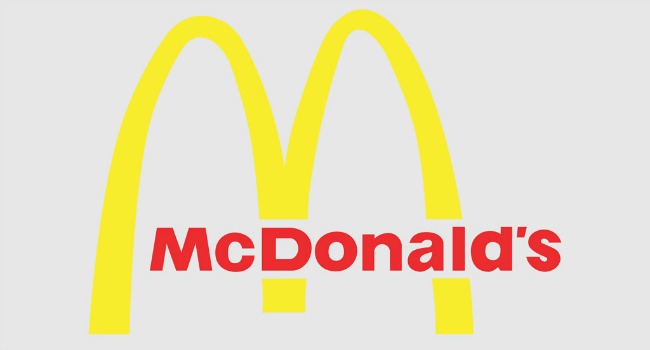You’ve probably heard the terms UX and CX, and how they’re the key to your company’s success. Many people still aren’t exactly sure what the difference between the two concepts is.
Buzzwords like these are not easy at the best of times. They end up alienating one set of people from another - the ones who know what they mean and the ones who don’t care what they mean. This is not really a problem when the phrases and terms are used within a closed group of people that have a good idea what they mean. Go to a soccer match for example and you will hear the same cry ring up several times during the game:
‘How is he, Ref?’
To the uninitiated this makes no sense at all. Why would the crowd be asking the ref how someone is doing? The answer is simple; it’s a phrase which has a very particular meaning and which is only known to those who play football at a competitive level. In case you’re wondering, the phrase roughly translates as:
‘Ref, surely the centre forward is miles off-side, come on. Blow your whistle. Are you blind?!’

In order for two people to have a conversation about UX, both people need to be clear about what exactly they mean by the terms. Simple enough you might say, but not as simple as you think. You could ask several people and they will give you a different definition of what they mean when they use the term UX or CX (not to mention UX design and UX research).
There is a clear distinction between UX and CX. And it might help to set out a clear definition of CX and UX along with some examples.
Only two industries refer to their customers as ‘users’ computer design and drug dealing. — Edward Tufte
UX is an abbreviation for user experience and is often referred to as it’s different parts such as UX design or UX research. But, the crucial thing to remember is that UX is an area which the user inhabits or travels through when they are using your product or service.
UX design will to some extent attempt to make sure that the trip is as pleasurable and user friendly as possible. UX design could not do that without UX research.
UX research is the process by which information is collected or gathered from users about their experience of your product or service.
UX design and UX research are both fundamental parts of the work which a UX person will do.
One area in which organisations fall down in is confusing UX design and UX research. UX design is focussed on the product and usability. UX researchers go out and find out what users really want. They can objectively observe users as they use the product.
In a small company it will be difficult to avoid mixing the two up but there is no excuse in a larger organisation. When there is a big enough UX team it can be divided in UX designers and UX researchers.
As a designer, it’s very difficult to appreciate the difficulties that users will experience if you know the product or site inside out. You have to put yourself in the shoes of someone who may know absolutely nothing about your product or how it should work. That can be hard to do sometimes after staring at the same screen for weeks.
There are of course designers by trade that are also trained and passionate about UX. These people will have a lot of empathy and will understand the user. If a user complains or mentions an issue then their first response won’t be: ‘what a moron?’. Some users can be slow on the uptake but at the end of the day they are the ones who are paying to use your product and no matter how trivial their issues they need to be treated with respect.

CX encompasses customer interactions and deals with touch points including web, mobile, brochures, and human contact (support and service).
In other words it includes everything. To further complicate matters, the customer experience begins long before your product enters their orbit and will continue long into the future.
Imagine you buy a product brand A and have an entirely positive experience. Later you discover that a friend bought brand B and it does everything that brand A does but only costs half the price. Suddenly your emotional engagement with brand A suffers through no real fault of brand A. This could all happen long after you first engaged with brand A.

Good marketing makes the company look smart. Great marketing makes the customer feel smart. — Joe Chernov
A good CX can sometimes overcome issues which impact on UX. For example, a user might have a usability issue while interacting with your product but the CX is so good that they go away feeling like they had a good overall experience.
For example, you walk into McDonald’s and order coffee and a McMuffin. You sit down and ten minutes later your McMuffin has not arrived. You are feeling a little upset. What happens next? You walk up to the counter point out the mistake. Not only do you get your McMuffin you probably get another coffee or a pastry for your trouble. There is no quibbling, it just happens because brands like McDonald’s pride themselves on their customer experience. Even where UX breaks down (i.e. your order does not arrive) CX picks ups the ball and turns that negative into a positive.

It takes a special kind of bad CX to turn free money into a bad experience
There is an important exception to note. Regardless, of the quality of the customer and user experience. The customer/user will remember the last experience over others regardless of how significant that final experience is.
I recently got a voucher to spend 20 euro ($23) in a local supermarket. I was very happy and did some shopping and had a very positive engagement with the supermarket. At the checkout this took a slight turn for the worse.
As I was packing I noticed that I didn’t have enough room in my bag and decided to get another bag. There is a cost for purchasing a bag in a supermarket in Ireland. I asked the attendant if she could take the cost of the bag out of the voucher but she had already scanned it and couldn’t undo that transaction. It was only seventy cent for the bag. But, despite getting nearly 20 euro worth of shopping free of charge, the seventy cent I paid for the bag left me feeling slightly negative as I was leaving the store.
As someone who thinks and reads about UX and CX rather a lot, my thoughts were simply that the store had gone to a lot of effort and expense to get me to engage with their brand and it was pretty much nullified by a really silly ‘system process’ at the very end of the engagement which left me with a bad overall emotional reaction to the experience.